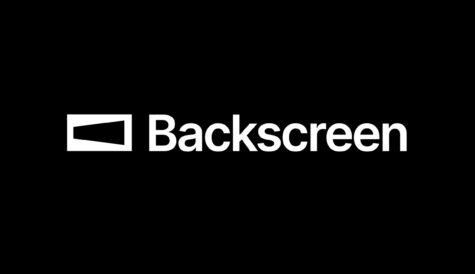Paying attention: OTT billing systems
 Making money from investment in OTT and multiscreen delivery remains challenging for operators. Anna Tobin looks at ways in which customer care and billing systems can help or hinder them in their efforts.
Making money from investment in OTT and multiscreen delivery remains challenging for operators. Anna Tobin looks at ways in which customer care and billing systems can help or hinder them in their efforts.
OTT is no longer a novelty. It is, for many viewers, their prime viewing source and it needs to start paying its way. The question is, how?
“The media ‘big bang’ caused by the colliding worlds of TV and the internet is still in full swing. With everyone from Netflix to Microsoft and the BBC producing original, premium-quality programming for web TV services. Content is still king – but consumer allegiance and effective monetisation is key to unlocking the full revenue potential of this influx of IPTV entertainment,” says Albert Lai, chief technology officer of media at online video specialist Brightcove, summing up the current state of affairs. “The past year brought notable change in how media organisations make money from video. Triggered in part by the rapid growth of OTT services, viewers today are comfortable with a variety of pay models to match the different ways they’re viewing content – from subscriptions and rentals, to pay-per-view models. It’s a development that hasn’t escaped the notice of traditional, free-to-air broadcasters looking to diversify the ways they monetise their content and reduce their dependency on advertising-based revenues.”
Diversifying into OTT
It’s perceived to be slightly easier for traditional content providers to draw in income from diversifying into OTT than it is for pure OTT providers who are having to build up a customer base and billing system from scratch. But it’s not as simple as that.
Service providers may have to do hugely expensive deals with OTT content providers to attract new customers and reduce churn. In venturing outside the traditional world of access controlled gateway devices such as set-top boxes, the challenges in managing revenues mount. There is a need to make a substantial investment in billing systems to allow service providers to seamlessly cater for paid for OTT content and not alienate viewers.
This is a particularly big undertaking if those billing systems are proprietary. Billing systems, whether new or existing, need to be or have been designed to be future proof.
“It’s always a challenge when you scale up a customer management and billing payment system and scale up rapidly,” says Ed Finegold, director of strategy at NetCracker. “You have to make sure that the day you get the most signed up is not the day that your business ends because the whole system of signing up subscribers and billing them etc. breaks down under the pressure.”
Added to this, many operators are fighting a losing battle to sustain other areas of their business too. “In the western world, SMS is dead. Many of the large established service providers are seeing a big decline in revenues,” says Yair Lezer, billing provider LogNet’s billing’s vice-president of global sales. “We are seeing them have a huge debate internally on whether to fight or join this OTT tsunami.”
Fighting it is hardly an option. To survive, OTT will need to be available in some form on their platforms. And this requires operators to adopt a whole new mindset, says Finegold at NetCracker. “Traditional pay TV operators tend to look at subscriptions in terms of households. As the world moves towards multiple devices and OTT you are catering for individuals within that household,” he says. “So the way that a billing system defines a customer has to shift. It needs to track each of those individuals, each of whom may have different entitlements and different access mechanisms from inside and outside of the home. So the customer model changes and the product model changes and you have to question whether your existing system is adaptable to that type of requirement?”
Two systems
Many companies are choosing to minimise the risk, by gradually migrating customers off their old legacy systems to a next generation platform. By offering their standard premium subscription services alongside a new pay-as-you go service targeting new customers, providers have the opportunity to run two billing systems concurrently and slowly move existing customers over to the new ‘anything goes’ system.
Free-to-air broadcasters are also experimenting with billing systems as they use OTT to venture into paid services in a further bid to boost income.
“The blurring of lines between pay TV and free-to-air works both ways,” says Lai at Brightcove. “Both Sky and BT have made some of their premium sporting content available to non-subscribers, for example, while BBC Worldwide has announced plans for three new pay-TV channels to showcase and monetise BBC content internationally. Viewers are embracing a blend of OTT services on a host of devices – with a breadth of monetisation models to match. It’s a crowded marketplace. And as paid content models mature alongside changing consumption habits, the evolution away from a linear broadcast world is one in which original programming –and agile monetisation – are paramount in capturing the consumer.”
To catch up with their consumers’ expectations, grow their audience and, consequently, ensure their future, operators must ensure that their services are available on as many suitable devices as possible. “This requires both significant marketing and content investment, but also a lot of development effort in technology platforms and testing,” emphasises Simon Frost, head of TV marketing at Ericsson. “One way for these players to increase their value is to partner with other players, particularly TV service providers. These partnerships offer advantages in terms of access to large numbers of customers, improved loyalty, flexible payment options, bundled marketing opportunities and other benefits.”
To maximise revenues, OTT content owners will most likely benefit from doing deals with major pipe owners [icitspot id=”263991″ template=”box-story”]following Netflix’s lead. The main challenge for the pipe owners is to provide an attractive environment for OTT partners to work with them, says Frost.
“The operator has a lot of opportunity to help OTT players with their own challenges, particularly around monetisation. However, it requires a different way of thinking about the value chain – turning it into a value network. And it may require investment in new processes or even systems,” he says. “For the greatest value-add as a TV service provider aggregating an OTT provider’s service, they need to be able to offer smart recommendation and search across all of the linear and on-demand content on offer and the on-demand content needs to also reflect the OTT service.”
Operators need to view OTT not as a necessary nuisance, but as an important additional revenue source. When they start to do this, it is likely that their investments in this area will start to pay off. There are many innovative and flexible ways that service providers can implement to maximise revenue from OTT.
Subscription video-on-demand (SVoD) as part of OTT services is thought to be one potentially lucrative revenue stream for content providers. You need to look at the way the DVD business has adapted to the digital world to see the potential in SVoD, points out Finegold at NetCracker. “The DVD business is going digital and if you look at the numbers, that market is growing very well and steadily and displacing the traditional DVD and Blu-ray market,” he says.
Jamie Mackinlay, commerical director at PayWizard uses Netflix’s House of Cards as an example of how viewing habits have changed in recent times: “People aren’t interested in waiting a week to watch the next episode of House of Cards now; they want to watch it when they want and a subscription model is generally preferable to a transactional model here and I think this works for users too.”
Users are certainly increasingly bingeing on box sets to while away on a wet weekend. “The Netflix situation shows just how dramatically subscription VoD can be embraced by consumers, and it is following a similar commercial model to that of music [services like] Spotify etc.,” adds Frost at Ericsson.
“We see from our ConsumerLab research that consumers perceive additional value in subscription on-demand services given the accepted trade-off of relatively low cost per month and a good library of content. The monthly cost for Netflix to watch all of Breaking Bad for example is far less than buying the physical media, especially if consumption is relatively fast,” he says.
Loyalty
Pay TV service providers who own lucrative content rights are also diversifying by offering access to some of that content via OTT SVoD services. Sky in the UK, for example, offers non-subscribers the chance to watch a selection of programming from Sky Movies, Sky Sports or Sky’s entertainment package, paying by the day or week without a contract.
While bringing in new ad hoc trade, however, operators also need to keep their existing business happy. Loyalty is an area that media businesses haven’t been particularly ahead of the curve on, points out Mackinlay at PayWizard. “There is a big gap between the type of analysis that goes to a retail customer of, say, a supermarket, compared to users of various media,” he says. “Media businesses have the data that they need to do this level of analysis. We are trying to help our clients understand that they have got a lot of potentially quite rich data and they need to marshall that into being actionable. This is going to be a key ingredient of monetisation moving forward.”
Creating a loyal customer base and establishing relationships with OTT partners is going to be key to operators’ long term success. “Operators can offer many services to their partners, which partners will pay for and which will attract valuable partners to their ecosystem,” says Ericsson’s Frost. “They can promote these external services on their own sales channels. They can use customer insight to create targeted marketing of partner offers. They can bundle partner offers in their bundles. They can create larger service offerings that include the OTT player’s service. For example, an offer for parents which includes location tracking from a partner, as well as other services such as parental controls, video calls with the child, etc. They can also offer flexible payments so that customers don’t have to have a subscription, but can pay by prepay or pay-as-you-use and they could have heavy usage discounts, etc.”
Additional perks could include sponsored data deals, such as those offered by AT&T, where the brand, not the customer, takes on the cost of providing data. Operators could also give content partners access to quality of service information for specific customers or transactions.
“All of these are workable,” says Frost, “but they may require changes in processes or systems. Some of those changes are happening anyway: operators are paying much more attention to analytics around QoE, for example. But they need to be extended to provide access and value to partners. In the short term, the most feasible are the sales and marketing services, subscription payments and bundling.”
The mobile business has already led the way when it comes to developing innovative payment plans. The TV business could take a look at some of the payment plans mobile operators have put in place in the developing world, where pre-pay for enterprises, family accounts, short-term upgrades, cross-product promotions and personalisation, are all on offer.
This flexible service and subsequent billing option is likely to be the next stage in operators’ business models, but it won’t be the last. Ultimately there will be a one-world shop where you can buy from wherever you want, predicts Lezer at LogNet Billing. “If, say a good Hollywood movie comes out, Russian people will want it dubbed in Russian so they will buy it via their local OTT provider that has invested in dubbing. Whereas many in the Netherlands where they speak good English will buy direct from the supplier,” says Lezer. “The service providers are very intelligent and they will create their own OTT shops or sign up with OTT vendors and bundle everything together so you will get your OTT bills with your other data. You will have your favourite OTT providers, you will click on to them, check what is on their lists, order and get it streamed.”
If you’re not taking the content from your local telecom, DTH or cable provider but from a global source, the local supplier will bill you solely for the data you use to receive this. After a complicated interim period, providers’ billing systems will actually be vastly simplified.



